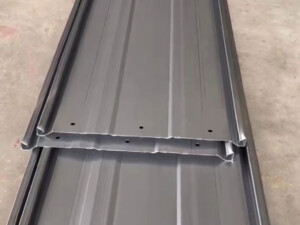The dust collecting electrode is a dust collecting surface made of metal plate. In the gas channel of electrostatic precipitator, negatively charged particles are collected on the dust collecting electrode. The design of the board varies from manufacturer to manufacturer. These plates are fixed on the shell of electrostatic precipitator at ground potential and used as the positive electrode of gas channel.
The dust collecting plate (CE) is used to receive and retain the precipitated particles until they are intentionally moved into the hopper. The dust collecting board is also a part of the power supply circuit of the dust collector. The functions of these dust collecting plates are incorporated into the design of dust collector. The plate baffle shields the airflow of precipitated particles, while the smooth surface provides high working voltage.
The collecting plate is hung on the shell of the dust collector and forms a gas channel in the dust collector. Although the design of collecting plates varies from manufacturer to manufacturer, there are two common designs: metal plates supported by anvil beams at both ends. The anvil beam is also the impact point of the collecting rapper.A plate supported by a hook directly from the dust collector shell. Two or more collecting plates are connected at or near the center through a vibrating beam, and the vibrating beam is used as the impact point of the vibrating system. Top, center or bottom spacer bars can be used in any design to keep the current collector plate aligned and maintain the electrical gap of the discharge system.
Details of the collecting plate are as follows:
- Raw materials: The collecting plate is usually made of carbon steel. For some applications where carbon steel plates are often corroded, they are usually made of stainless steel or alloy steel.
- Material thickness: The thickness of the dust collecting plate ranges from 1.0mm to 2.0mm.
- .Spacing: The spacing between plates is different due to different designs of electrostatic precipitators. For example, in an electrostatic precipitator with linear emission electrodes, the interval between plates is 150 to 300 mm.. The distance between high-efficiency electrostatic precipitators (using wires) is 200 to 230mm. The spacing between electrostatic discharge power supply plates using rigid frames or plate-type discharge electrodes is 300 to 400 mm.
- Height: The collecting tray is usually 6 to 16 meters high.
















